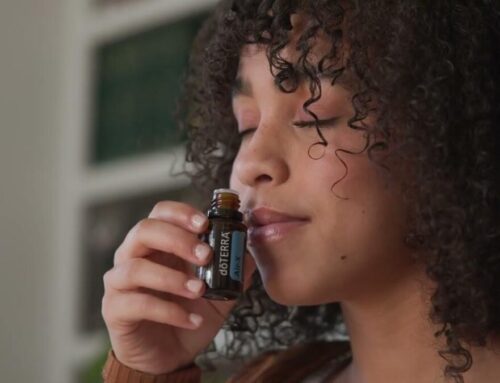Pure, high quality oils.
The most important guideline for essential oil safety that I can give you is to use high quality, therapeutic grade essential oils. This is super important. You want oils that have been tested for both potency and impurities. Using an inferior oil or one that is synthetic could cause harmful reactions, and may not provide the same therapeutic benefit you are hoping for.
Start Slowly.
If you are new to essential oils, start out slowly. Don’t slather 10 new oils on your skin first day. Introduce a few oils, then in the next day or two, try a few more. If you have sensitive skin or are prone to irritation, do a skin patch test before using an oil.
Never apply oils directly to the eyes or ear canal.
There are some places that oils just shouldn’t go. Eyes and ears are at the top of that list. After you have applied oils, wash your hands before rubbing your eyes or around the eyelids, touching the interior of your nose or handling your contact lenses. Other areas that are sensitive and prone to irritation are the skin around the genitals and the mucous membranes. These are both prone to irritation. Guys, be sure to wash your hands before using the restroom, particular after applying an oil like peppermint.
Check with your doctor if you are on medications, are pregnant or nursing or have critical health concerns.
Dilute.
Because skin reactions, especially on sensitive areas or those with sensitive skin, are possible even with the highest quality of oils, we always recommend you dilute oils with a carrier. Diluting will not diminish the effectiveness of the essential oil, so do not hesitate to do so if you have any concern about skin irritation.
Always dilute with a carrier oil with babies, children, the elderly and those with sensitive skin. Their skin is more sensitive and susceptible to irritation, burning, or stinging sensations. Use a carrier oil to protect this sensitive skin against irritation.
When applying oils to babies & children, ensure they will not accidentally get the oils in their eyes or mouth. The bottoms of the feet and then covered with socks, or along the spine are good locations.
Remember that repeated use of an oil in the same area can, for some people, also cause a sensitizing reaction. So mix it up a little. Avoid applying the oil to the same place day after day.
Do a Basic Skin Test
When using a new oil for the first time, a skin sensitivity test can help you avoid potential issues if you do happen to be more sensitive to that oil.
Place a small amount of carrier oil such as coconut or olive oil, followed by a small amount of the essential oil on the inside of the elbow, underside of the forearm, or wrist. After approximately 1 hour, check the area(s) for any type of reaction.
If you have experienced discomfort, reddening or a rash, you will want to avoid using that oil – at least that brand’s offering of that oil.
Dilute with oil, not water.
If you happen to get an essential oil somewhere you did not intend, or experience discomfort when applying it to your skin, please use a carrier oil or pure vegetable oil to rinse or dilute the area. Using water will increase the discomfort.
“Warm oils”
Some oils, such as cinnamon, thyme, oregano, cassia, black pepper and clove, can feel very warm or even hot/burning on the skin and should be diluted with a carrier oil when used topically, even on adults. Peppermint is a “cooling” oil, but is another oil you may want to dilute.
Some essential oils are photosensitive.
Photosensitive oils, primarily citrus oils such as wild orange, bergamot, grapefruit, lime, lemon, and mandarin, react to radiant energy or light such as natural sunlight, sunlamps, or other sources of UV rays.
The result is a dark pigmentation or a rash on the skin like a suntan / sunburn. To avoid issues with photosensitive oils, wait a minimum of six to 12 hours before exposing the skin where you have applied citrus oils to UV rays or sunshine.
A little goes a long way.
Essential oils are pure concentrates. The higher quality the oil, the more potent it will be, so smaller amounts are required. One or two drops is considered a dose. Less oil, more often, is best. You do not need to wait hours before using an oil again. Apply the oil; if there is still discomfort, apply more again in a few minutes.
Internal Use.
While most essential oils on the market should not be taken internally (and this warning is usually on the label), certified pure oils are labeled as dietary supplements and are safe for internal use, in small quantities. You can use mild oils by putting a drop under the tongue or in water, however, hot oils should be taken in capsules. They can also be diluted with a carrier/vegetable oil or taken with food. Many oils may be used in cooking recipes for flavoring and/or therapeutic benefit. My husband makes some awesome peppermint brownies!
Pregnancy & Nursing.
Oils applied topically at ordinary levels should be safe for a developing fetus, however, please use caution with essential oils during pregnancy. Popular oils that are generally considered safe to use during pregnancy include bergamot, lavender, lemon, geranium, ginger, sandalwood, wild orange and ylang ylang. Other oils may also be suitable; please consult your healthcare provider if you have questions or concerns.
We do recommend avoiding clary sage until delivery. Fennel can help support a normal milk supply, while use of peppermint can reduce milk supply in some mothers, so you may want to avoid internal use of peppermint (and blends containing it) in the weeks prior to delivery and while nursing. Additional oils may be helpful during and after delivery.
Diffusing around pets.
When diffusing oils around pets, make sure that the door to the room is open and the pet is free to leave. Most of our furry friends enjoy the oils and can benefit from them, but your pet must to be able to move away from the diffuser when they need a break. Avoid using melaleuca (tea tree) on/around cats. The book SpOil Your Pet by Mia K Frezzo & Jan C Jeremias is a great resource for guidance on using oils with your pets.
Essential oil and bath water.
One common application method is in a bath. When using undiluted oil in bath water, you will want to use a dispersing gel (bath/shower gel can work) to prevent oil from pooling as a concentrated drop in the water, which could then irritate your skin. Also note that oils will evaporate quickly in very hot water.
Additional Essential Oil Safety CAUTIONS:
Persons with conditions such as asthma, epilepsy, high blood pressure, or other critical health conditions can definitely benefit from essential oils to support their overall health & wellness goals, but may want to consult a healthcare professional. In general, individuals with epilepsy should be cautious with or may want to avoid: Rosemary, fennel, sage & eucalyptus.







